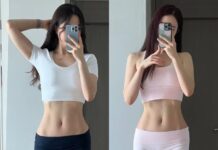The market is flooded with a variety of blenders, offering different designs, capacities, and prices, which can be overwhelming for consumers. After going through three blenders, I realized that there are four important rules to keep in mind when purchasing this appliance:

1. Avoid blenders with high rotational speed but low power
Many blenders on the market boast impressive rotational speeds, such as 25,000 or even 33,000 rounds per minute, and are often affordable. However, consumers should pay attention to the power rating to truly assess the blender’s effectiveness.
There are two ways to increase the rotational speed of a blender: improving the motor’s performance or reducing friction. Reducing friction only increases the speed when the blender is empty, but once food is added, the blades may get stuck, resulting in decreased performance.
The power rating of a blender indicates the strength of its motor, and only a sufficiently powerful motor can achieve an efficient rotational speed. Typically, a 300W blender corresponds to approximately 11,000 rounds per minute. To reach 33,000 rounds per minute, a blender would require a minimum power rating of 900W.
Therefore, a blender with a high rotational speed but low power will not meet the desired performance expectations.

2. Avoid blenders with multiple stainless steel blades
When choosing a blender, one important factor to consider is the number of blades. More blades mean more cuts per rotation, resulting in better and faster blending. Nowadays, blenders on the market typically offer between four to eight blades.
However, while focusing on the number of blades, consumers should also pay attention to the blade material. Stainless steel blades tend to be softer and more prone to dulling over time, whereas pure steel blades offer superior hardness and cutting performance. Dull blades will result in inefficient blending.
Therefore, if your budget allows, opt for a blender with pure steel blades and at least six of them. If you have a limited budget and can only afford a blender with stainless steel blades, choose one with four blades to ensure optimal performance.

3. Avoid lightweight blenders with plastic jars
When selecting a blender, many people overlook the weight of the jar. In reality, glass jars tend to be much heavier than expected, typically weighing over 2kg. Some blenders have jars weighing around 1kg, but if the jar weighs less than that, it should be approached with caution.
There are two ways to reduce the weight of a blender jar: changing the material or decreasing the capacity, neither of which is recommended.
– Changing the material: Replacing a glass jar with a plastic one may lead to durability issues over time. Plastic jars can discolor, become brittle, and break.
– Decreasing capacity: Anyone who has used a blender knows that the stated capacity rarely meets actual usage needs. For hot drinks, the usable capacity is typically only about 2/3 of that for cold drinks. When making smoothies, a 1L blender is usually only enough for two people.
Therefore, regardless of your budget, opt for a blender with a glass jar and a capacity of at least 1L. For larger families, a minimum capacity of 1.2L is recommended to meet everyone’s needs.

4. Avoid cheap blenders advertised with low noise levels
Many consumers are drawn to affordable blenders that claim to operate at low noise levels, typically advertised as 40 to 50 decibels. However, in reality, these blenders often produce noise levels of 70-80 decibels or even higher, which can be more disruptive than a range hood.
It’s important to note that cheaper blenders tend to overstate their low noise levels due to non-compliance with measurement standards, resulting in inaccurate labeling.
Before purchasing a blender, consumers should be prepared for potentially high noise levels. If you are sensitive to noise, consider choosing a blender with additional sound insulation, which can reduce noise levels by about 10 decibels.







































